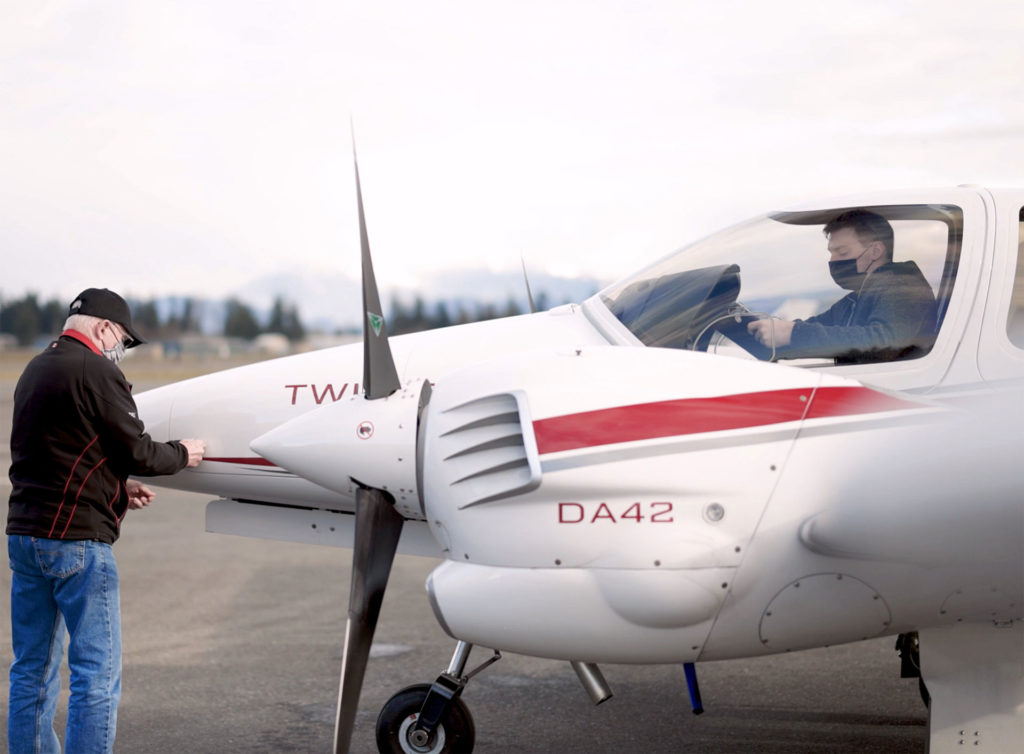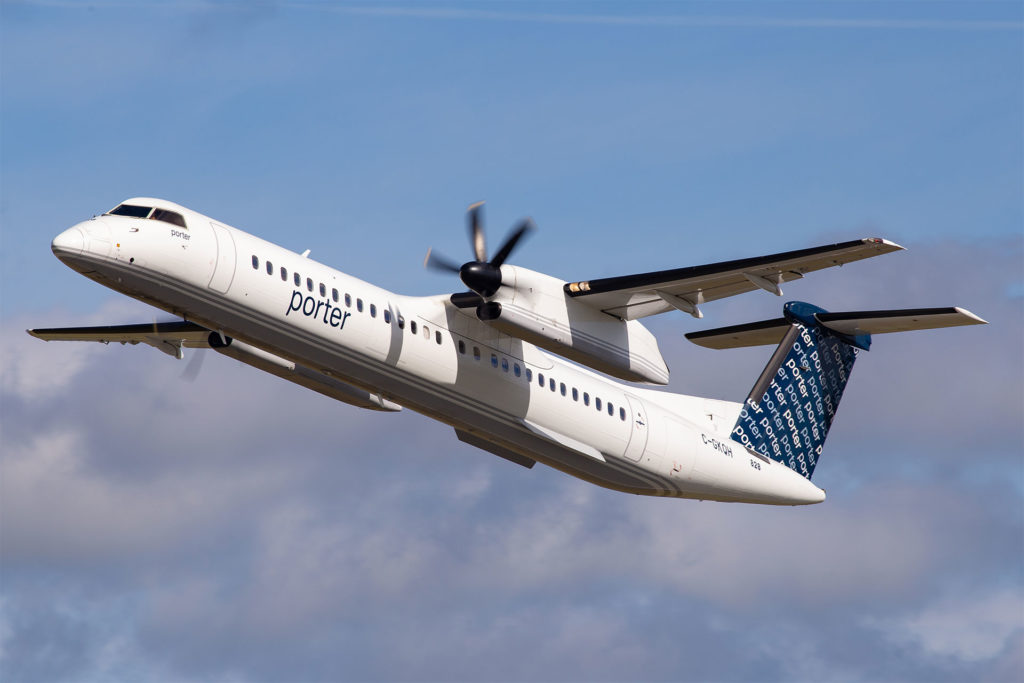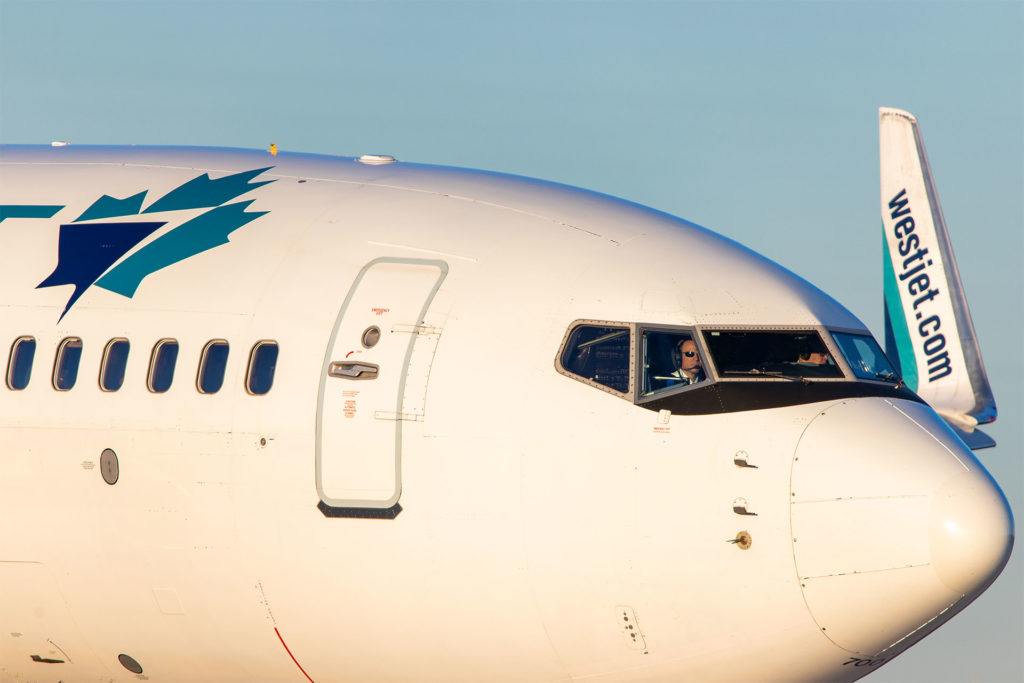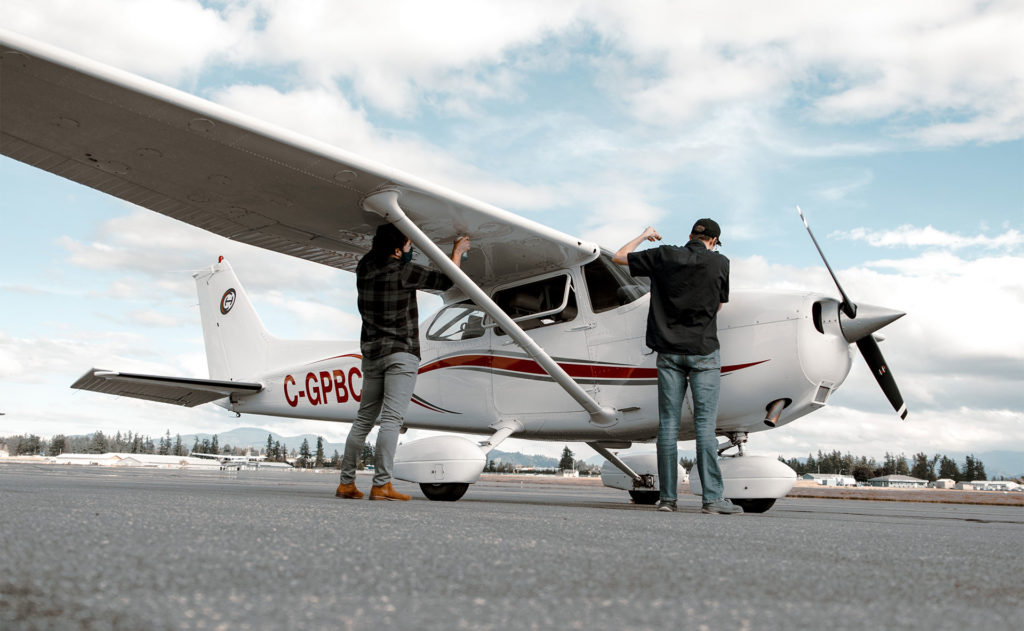Estimated reading time 17 minutes, 47 seconds.
In 2020, the demand for pilots came to a screeching halt as operators parked their planes and pared down operations. The advent of Covid-19 had thrust the industry into the worst down cycle in memory, and airlines scrambled to stem the bleeding. In their hurry to cut costs in the face of deflated demand, operators furloughed thousands of pilots and offered many more early retirement packages.
While devastating to the aviation industry, the pandemic actually provided a temporary stay from the looming spectre of a global pilot shortage. In 2019, a poll by management consulting firm Oliver Wyman found that 62 percent of flight operations considered a shortage of qualified pilots to be a significant threat to their future. In North America, found the firm, this shortage was largely precipitated by older pilots facing mandatory retirement, fewer ex-military pilots, and young students deterred by the high cost of training.

But while Covid-19 had a devastating and significant effect on the global aviation industry, many experts predict the demand for travel will roar back even stronger than it was pre-pandemic.
According to simulation giant CAE’s 2020-2029 Pilot Demand Outlook, the number of active pilots is expected to return to pre-pandemic levels by next year, 2022. Just when retirements and attrition have thinned the ranks, CAE predicts “an acute demand for pilots, resulting in an estimated short-term need for approximately 27,000 new professional pilots starting in late 2021.”
In fact, the Montreal-based simulator manufacturer expects the global civil aviation industry will need more than 260,000 new pilots over the next decade.
In Canada, major airlines are still in the process of recalling pilots who were furloughed due to the pandemic. They’re coming back online slowly, methodically, as demand returns.
Prior to the pandemic, WestJet Airlines operated more than 700 flights a day. During the height of the global health crisis, that number bottomed out at 30. Today, spokesperson Madison Kruger said the Calgary-based airline is seeing positive signs of recovery and is flying 400-plus daily flights across its network.
“We see a strong pipeline for the immediate future and since May 2021, we have recalled or are in the midst of recalling and hiring more than 4,000 people (across many departments, including pilots),” she wrote in an email to Skies.

Air Canada is now operating at 40 to 50 percent of its 2019 schedule, plus eight to 10 widebody cargo flights per day. Capt. Murray Strom, the airline’s senior vice president of flight operations, said he hopes to see that number up to 50 to 60 percent of normal activity by Christmas, and 75 to 80 percent by next summer.
“This is predicated on no fourth or fifth wave and no other variant,” qualified Strom, a Boeing 777 captain who has been at Air Canada for 35 years. “Most of the industry predicts we’ll be completely back to 2019 levels in the 2024-25 time frame.”
Over the last 18 months, Air Canada retired between 250 and 270 senior pilots and laid off an additional 600. But Strom said the airline worked closely with its pilot association to craft a work-sharing package that saw most pilots flying about 60 percent of the hours they’d normally log. With 3,200 pilots currently on its roster, the flag carrier is now beginning to recall the 600 who remain on furlough.
“They’re being recalled from November onwards,” Strom told Skies. “We don’t anticipate hiring pilots off the street until sometime in 2023.”
Over the next three to four years, Air Canada expects to retire 50 to 80 pilots each year. From 2026 to 2050, Strom said normal retirement patterns will return, with 100 to 150 pilots departing annually.
“That means we will hire anywhere from 100 to 200 pilots per year, based on not having any further issues beyond our control,” he added.
Air Canada typically draws its pilots from regional carrier Jazz Aviation. In fact, 60 percent of its pilots come from Jazz, with the remainder hired from the military or other operators.

“With Air Canada being at the top the hiring chain, we don’t anticipate any issue recruiting pilots in the future,” noted Strom. “I do have concerns for the smaller operators, though. With the announcements that have been made of new entrants and the growth of other airlines, I can see there will be high demand for pilots again.”
Growing Into The Future
While most of Canada’s established operators had to slash operations and are now faced with the difficult task of building them back, Flair Airlines was already small at the onset of the pandemic. It’s been easier for the Edmonton-based carrier to implement an aggressive growth plan that is firmly rooted in the ultra-low-cost carrier (ULCC) model.
“We are growing, so it’s a bit different for us,” said Capt. Matthew Kunz, Flair’s vice president of business transformation and operations. “Everything for us is really growth. We started with three aircraft and dipped to one at the lowest point of the pandemic, but since then we’ve been able to take advantage of what’s been happening in the industry. Legacy carriers had to cut capacity; they carried a lot of costs. We were small, with no debt burdening us.”
Indeed, under the leadership of president and CEO Stephen Jones, who took the reins a year ago, Flair is rolling out an ambitious expansion that has seen it double in size during the pandemic. Kunz said the airline now operates 11 aircraft (eight new Boeing 737 Max aircraft, all delivered within the last six months, plus three Boeing 737NGs). The 12th Max is coming in December. The carrier announced in mid-October that another four new Max planes will be deployed in April and May 2022, bringing Flair’s fleet of 12 Max aircraft to 16. An additional four to eight Max planes are expected in 2022.

“Flights flex depending on the day of the week, but we’re around 35 to 40 flights per day,” he said. “Summer was a very busy time and we were flying 95 percent loads for most of the summer, all domestic.”
At the end of October, Flair expects to begin serving U.S. destinations such as Burbank and Palm Springs in California and Fort Lauderdale in Florida. More U.S. destinations are coming in the spring.
“The ULCC model lends itself to times of recession and difficulty when people are looking to travel at reduced cost – our model is distinctly ultra-low-cost,” said Kunz. “We are here to prove the ULCC model can work in Canada, by producing an airfare that stimulates travel.”
Pre-pandemic, Flair had just under 70 pilots on its roster. Today, it employs 158 pilots with another 36 starting groundschool this fall. The airline said it is “recruiting for 100 pilot positions to meet the needs of its growing fleet.”
With a flying career that extends back to 1986 and a resume that includes captaining a Boeing 777 for overseas carrier Emirates Airline, Kunz is uniquely qualified to lead Flair’s quest for experienced pilots. It’s the left seat he’s most concerned about filling.
“We have this rapid expansion plan, and we want to double our pilot crew. The real pinch point is the captain position, the experience you need there. That is our primary concern and it was heightened pre-pandemic. We’ve had a bit of a reprieve, but this remains a serious issue for us.”
With international connections and overseas experience, Kunz and the Flair team concentrated on recruiting a number of Canadian expat pilots who were laid off during the pandemic and returning home.

“The first 24 pilots we hired had an average experience level of 17,200 hours,” he said. “We’ve been really fortunate that we’ve been able to tap into that pipeline of pilots returning to Canada. They’ve taken the chance to move into a direct-entry captain position in a rapidly growing company.”
Kunz expects there to be a pool of qualified first officer applicants for the next couple of years. After that, he thinks the airline will be forced to consider lower experience levels for right seat positions. Regardless of where they come from, however, all Flair first officers will benefit from a clear pathway to the left seat. To help them get there, Kunz and his team developed a command course based largely on those administered by Cathay Pacific Airways, Etihad Airways and Emirates.
“Traditionally, you don’t see those in Canada,” he said. “That will be the cornerstone of how Flair handles the declining experience level over time. Captains are senior managers managing the aircraft, crew, passengers, flying the airplane, and taking the aircraft to a safe outcome. Our command course will give them the tools to do all of those things, how to manage the situation.”
Flair isn’t the only Canadian operator currently planning for growth. Toronto-based Porter Airlines is back serving its full network of regional destinations following a pandemic shutdown that lasted nearly 18 months.
Brad Cicero, Porter’s director of communications and public affairs, said the airline is currently in the process of recalling its pilots, with a near 100 percent acceptance rate.
“We maintained regular contact with all team members during the time that Porter suspended service, and we’re pleased to see the high number of people returning,” he wrote in an email to Skies.

After it re-establishes Dash 8-400 regional service from the downtown Billy Bishop Toronto City Airport, Porter will be shifting focus to the airline’s new fleet of Embraer E195-E2 aircraft.
In July, the airline announced its plans to extend service across North America with 30 of the Brazilian-made jets, with options to purchase 50 more. The E195-E2 fleet will be operated from Toronto Pearson, Ottawa, Montreal, and Halifax, and will serve new routes in Canada, the U.S., and even Mexico and the Caribbean. Porter will maintain its corporate headquarters at Billy Bishop.
Cicero said some of Porter’s existing pilots will be transitioning to the Embraer jets, and the airline expects to be recruiting pilots for both its turboprop and jet fleets by early next year. The first E2s will be delivered by mid-2022.
In addition to various grassroots programs that encourage mentorship and careers in aviation, Porter has also connected with selected flight training schools and colleges to offer bursaries and transition programs for new graduates.
Feeding The Pilot Pipeline
With travel demand forecasted to return with a vengeance, flight schools will play a crucial role in supplying new pilots. In the meantime, though, they are mindful of existing Covid regulations and have scaled back training accordingly.

Cathy Press, CEO of Chinook Aviation, which trains both fixed-wing and helicopter pilots in Abbotsford, British Columbia, is optimistic about the career potential for new pilots.
“We are seeing the markets going back to where they’ve been,” she told Skies in late September. “Over the last couple of weeks, it seems confidence has been returning. It looks like we’re starting to see people who were laid off going back to their jobs. It feels more normal now than three months ago.”
In 2019, Chinook’s fixed-wing program was experiencing strong demand, and students were wait-listed. Thirty percent of that business came from international students, which pretty much dried up with pandemic-related travel restrictions.
While pre-Covid grads were landing highly desirable pilot jobs, Press said it’s “back to old school economics now. You have to be prepared to handle bags, go north and wait for opportunities to come along, with a good attitude along the way.”
Her sense is that the industry is precariously balanced right now when it comes to staffing: “I think we’re sitting right on the edge of there being enough people today. However, a little more turning up the tap on demand will tip the scales.”
As more pilots reach retirement age, Press said their loss will create a knowledge gap, since many younger pilots were either laid off or left the industry during the pandemic.

“We’ll have people retiring at the top and those at the bottom won’t yet have the knowledge to fill the gap.”
To address the issue, Chinook Aviation is focused on graduating “job-ready” pilots. Press said that even before Covid, the school was looking at incorporating virtual reality simulation and courses like crew resource management as “a means of accelerating knowledge.”
Further, Chinook Aviation has been considering electric-powered platforms for both its fixed-wing and helicopter training divisions. Now, that focus on technology has been intensified.
Press feels there is still a lot of opportunity for student pilots who just want to fly.
“On the industry side, everyone is talking about how there won’t be enough people,” she concluded. “As long as you’re willing to take what’s offered and you are passionate about what you’re doing, you will succeed. Just don’t chase the economic ups and downs. Stay the course.”
According to consulting firm Oliver Wyman: “The most important question is not whether a pilot shortage will re-emerge, but when it will occur and how large the gap will be between supply and demand.”
Its recent study predicts that given a modest recovery from Covid, operators in some regions will feel the pinch of a pilot shortage no later than 2023. Oliver Wyman also predicts there will be a global gap of 34,000 pilots by 2025 – and this could be as high as 50,000 in an extreme scenario. Shortages are predicted to be the most severe in North America, Asia Pacific, and the Middle East.

To sum it up, there’s no doubt that Covid-19 has delayed the looming pilot shortage, but it’s only provided short-term relief. Oliver Wyman recommends that operators prepare for the challenge in three ways:
- Rethink operations to improve productivity and reduce the total pilots required;
- Continue to invest in training programs and recruitment; and
- Actively engage with their pilots, including those on furlough, to improve retention.
Those who are considering a pilot career are urged to look past the temporary pandemic-induced trough. There are bright futures ahead for those who work hard to get there, say industry experts.
“As a 50-year-old, looking back, I’m glad I made the decision to fly,” said Flair’s Matthew Kunz. “I’ve loved every moment of the career. Young people must understand there are ups and downs and tough times, but those things are beyond your control. Enter with your eyes wide open and have a good understanding of the industry, and you will be successful.”

